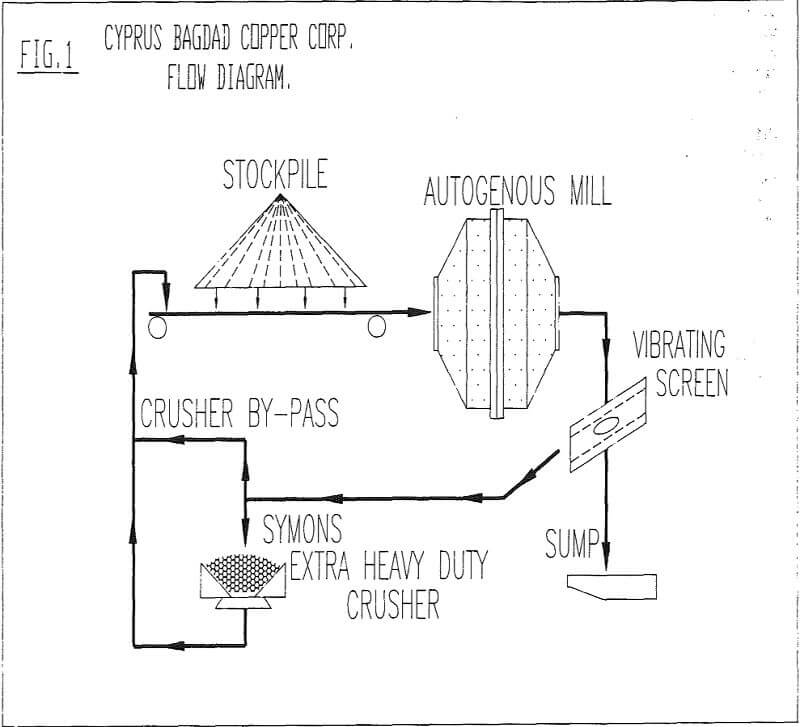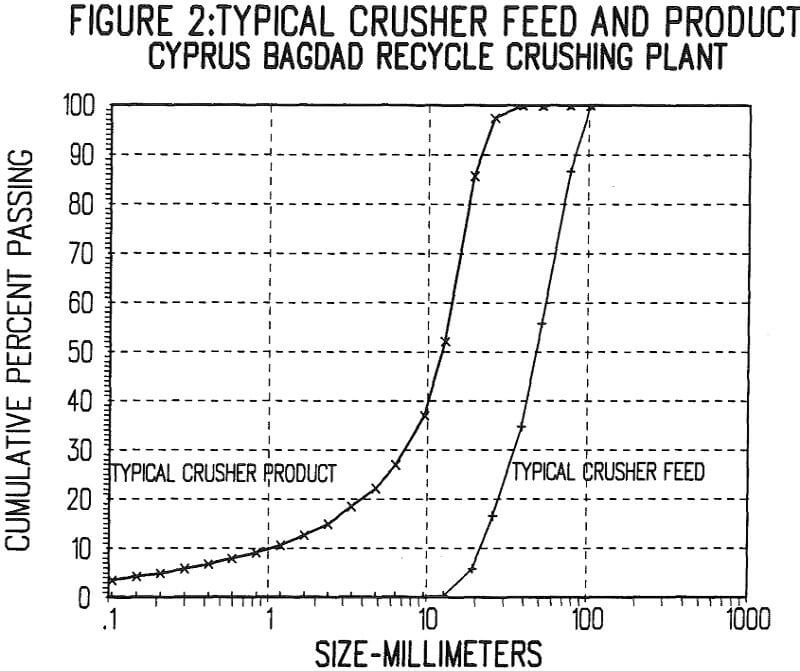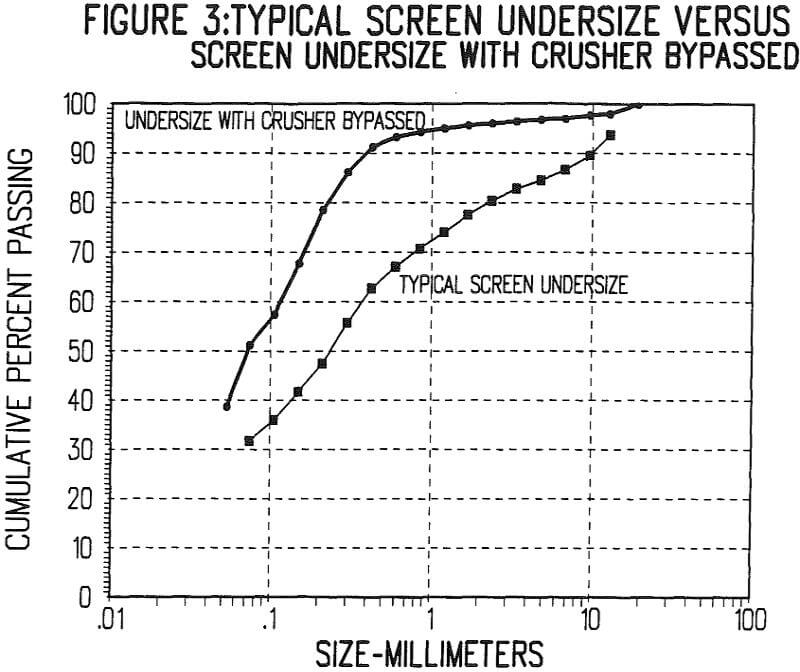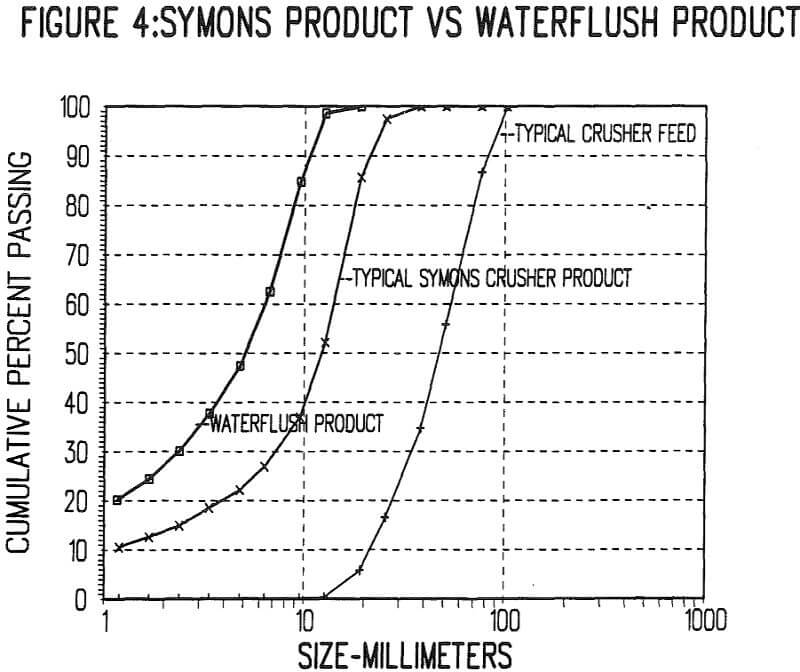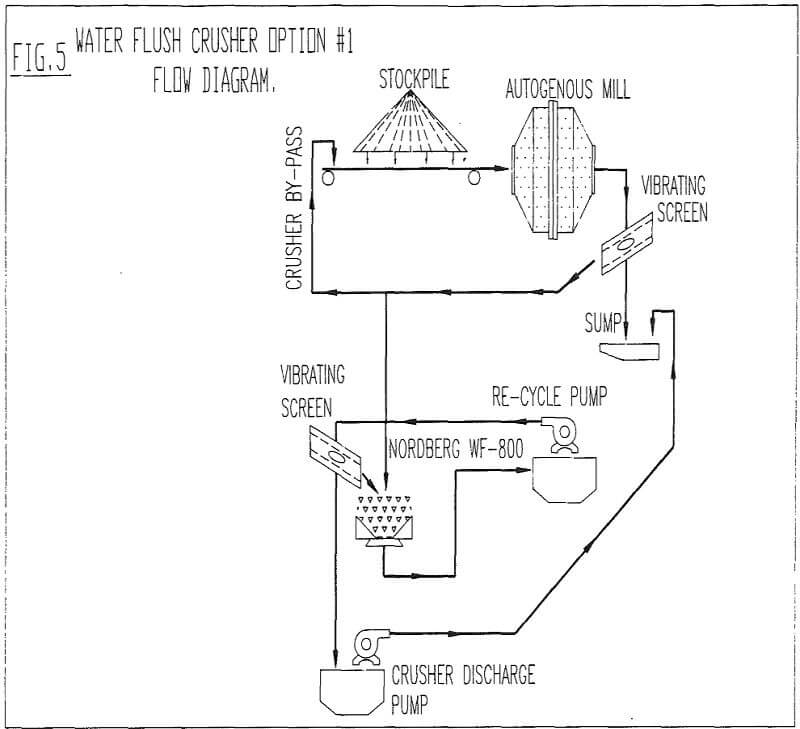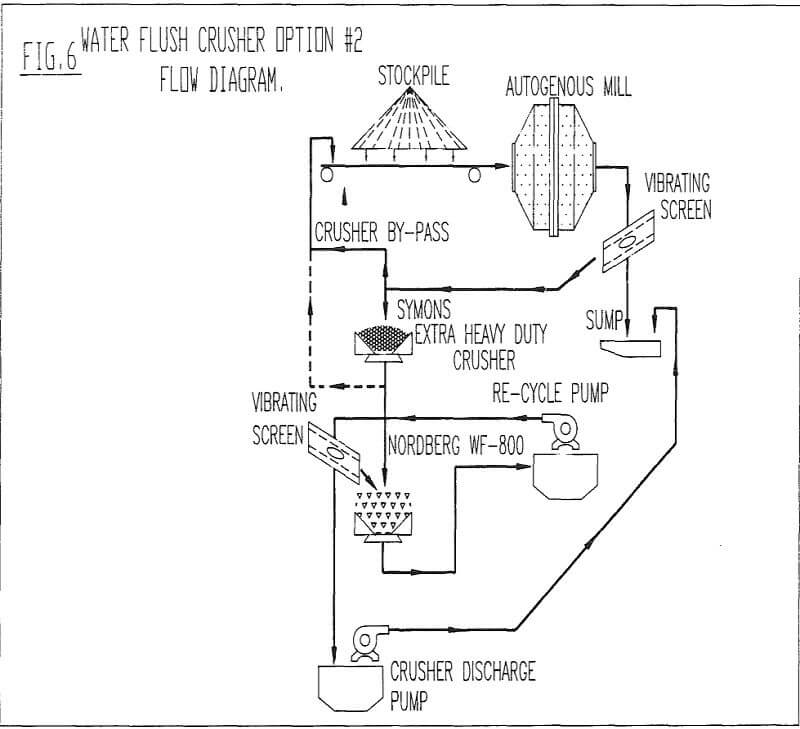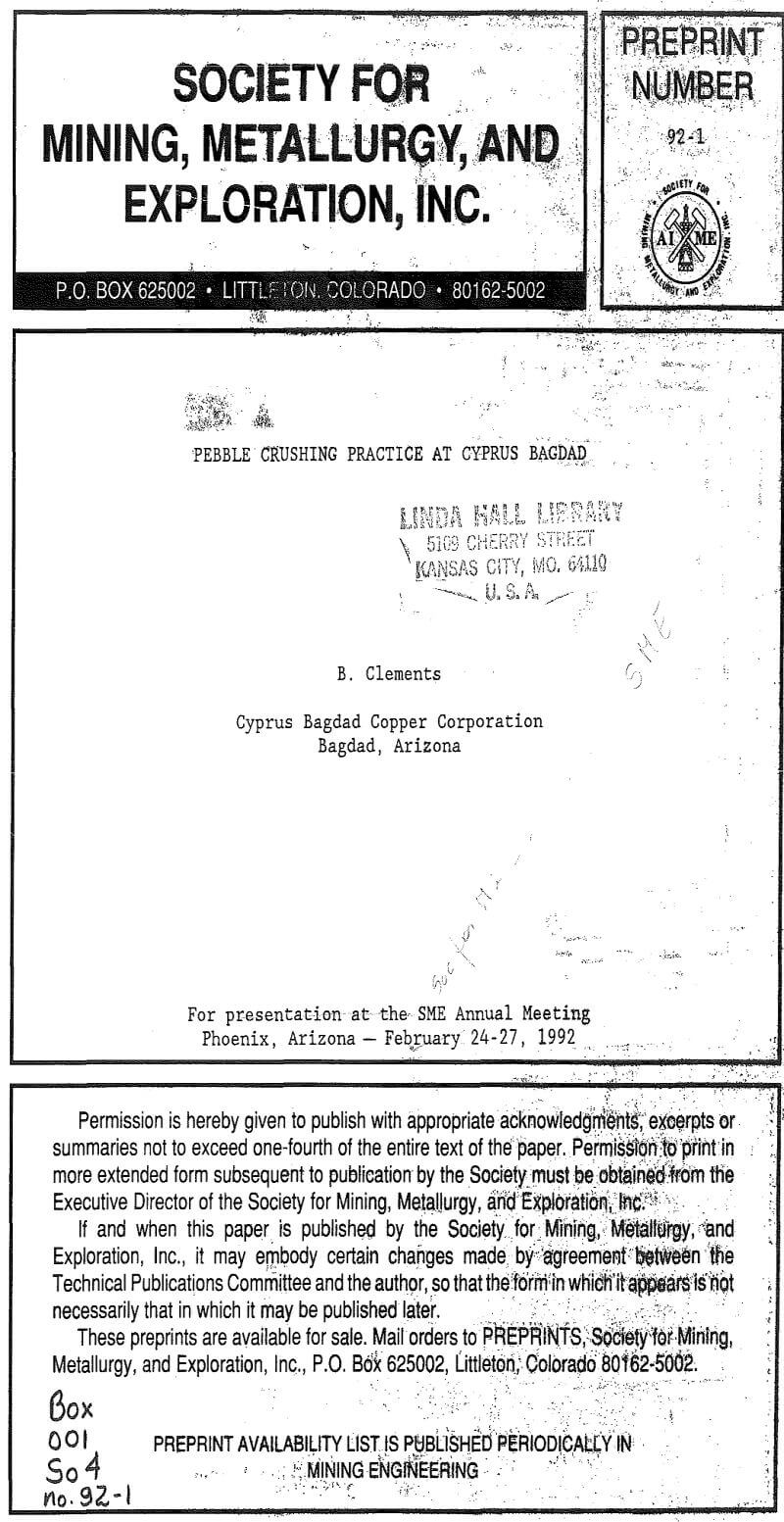The Bagdad mill, built in 1977, was designed for a mill capacity of 36,300 tpd. An ABC (Autogenous Mill-Ball Mill-Crusher) grinding circuit was chosen. The original mill contained three completely independent grinding circuits, each containing one 9.75 m diameter by 3.96 m long fixed speed autogenous mill, one 4.72 m diameter by 6.71 m long ball mill and one 2.13 m diameter short-head cone crusher.
Autogenous mill screen undersize combines with ball mill discharge in the cyclone feed sump. Four of the six available 0.7 m diameter cyclones are normally operated. Cyclone feed density typically ranges between 63 and 68 percent solids. Cyclone pressure ranges between eight and ten psi.
The crusher bypass belt is used to allow circuit operation when the crusher is down for repairs. This has allowed the circuit to be studied with the crusher excluded from the grinding circuit. Due to critical size pebbles in the circuit, operation without the crusher results in severely reduced throughputs.
In June of 1991, Nordberg was asked to conduct a pilot plant to test this technology on Bagdad’s recycle material. The study indicated that a 1.83 m diameter unit powered with a 520 kw motor would be needed to handle either present dry crusher feed or crusher product. The pilot plant crusher product was much finer than that produced by the present crushers.
It is apparent that many options are available to modify the present grinding circuit by running the autogenous mills in open circuit and producing ball mill feed through one or more stages of crushing. Since the optimum circuit configuration is not obvious, the Cyprus Bagdad staff has chosen to install a WaterFlush crusher on one grinding circuit with the ability to operate either in single stage or in series with the existing dry short-head cone crusher.
